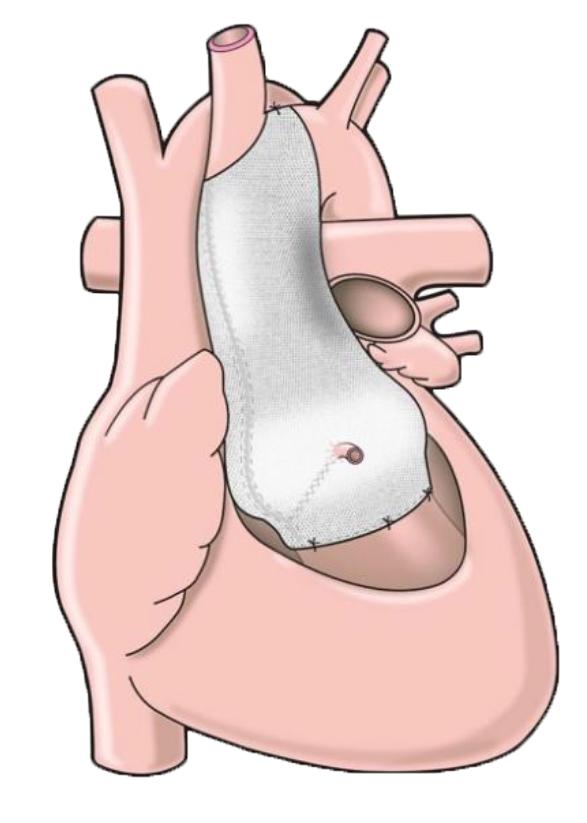A couple of years ago I was feeling great, swimming a few times a week with a swim club and surfing whenever I had the opportunity. Then in the summer of 2015 my mother very suddenly passed away with no warning signs, it was not long after that it was revealed that she, and also her sister who had died 30 years previously, had suffered from a ruptured aortic root aneurysm. Their father had earlier died of a ruptured abdominal aneurysm. The alarm bells started to ring quite loudly — it was time to get myself checked out. I saw a cardiologist the following year, who ordered an echo then a CT scan. That is when I learned that I had an asymptomatic 5.1cm root aneurysm. Although logic dictated it was familial I had no known genetic markers for it, but did have some medical history most likely related to a connective tissue disorder.
I soon learned that there was no easy fix, and in the United States where I live, I had the option of an aortic graft with my own re-implanted heart valve (VSRR) or a replacement valve (TRR), but not an ExoVasc PEARS as it was not yet licensed there.
At the time of diagnosis, I was given an annual chance of rupture of around one in 33, so the plan was to postpone surgery until the aneurysm expanded and the rupture risk breached the operating risks of the traditional surgery. In addition, I was to dial down my cardiac output to avoid rupture and to also reduce the growth rate of the aneurysm in order to postpone surgery several years. This meant no more heavy lifting and, when swimming, warming up slowly and keeping my heart rate aerobic or sub-aerobic – up to around 125 beats per minute. So, I bought an underwater heart rate monitor that ”told” me my heart rate every 20 seconds, cleverly transmitting it through my jawbone to my inner ear, and got back in the pool swimming in slow motion, forlornly looking over at the faster lanes where I used to swim. My passion for surfing was looking truly quashed.
I then read up on this remarkable patient-led invention by Tal. The US surgeons I had consultations with weren’t keen on the idea of PEARS, mainly I imagine as it wasn’t a technique they were able to use and they seemed to know very little about it. At the time there were no surgeons in the US who could appraise you for PEARS, (now it is possible to get checked out by Grayson Wheatley in Nashville). After considering the prospect of swimming for several years at 125 bpm and listening to my heart rate every 20 seconds, probably never surfing again, not lifting anything heavy, and generally taking it easy while waiting as long as possible for graft surgery, I decided to get assessed by Conal Austin at London Bridge Hospital. After earlier sending him my scans and reports, I saw him in December 2016 to see if I was a suitable candidate. I very quickly became sold on the procedure, and decided to go ahead, getting the gated CT scan before I left in order to manufacture the PEARS implant.
When back in the States I applied to my insurer to pay for the procedure, sending them a report from Conal Austin and supporting documentation, including a price list for the procedure from London Bridge Hospital. I was very relieved when they agreed to pay for it (less the deductible, flights and accommodation). As the procedure was not done in the US system, after a few weeks of consideration they approved it on the basis of their clinical policy bulletins. There were some later hiccups due to how to code the procedure in the documentation, but that was resolved at the last minute by better communication between the insurer and the agent in the UK who were dealing with the hospital on their behalf.
I was scheduled for surgery in early May and arrived a week earlier to get over any jet lag, although probably didn’t need to do that. I was definitely a little more nervous on this visit to the hospital! I checked-in in the late afternoon as I was scheduled for 8am. The surgery was, I was told afterwards, uncomplicated and I was under for 2 hours. I was woken up before being sent to ICU but have no recollection of that. ICU was an interesting experience as my waterworks did not respond well to the anaesthetic and I was up on my feet every half hour trying to pee. Instead of having me catheterized Conal Austin brought in a Urology consultant to check me out and when my kidneys seemed to be under no stress, it was decided to wait it out. It was a number of days before things started going back to normal in that department. Whilst in ICU I used up my quota of morphine quite happily but when back to the ward the next day I was fine on paracetamol and diclofenac, which I took for a few weeks. I was quite shocked at how weak my breathing was at first but it soon improved with a regular use of a spirometer. I was quite mobile from the first day, and on the 4th day on the ward put some clothes on for a walk outside by the hospital. By then I was keen to leave and get some good sleep, as hospitals are not great for light sleepers, so after I was cleared to go by the Urologist and Conal Austin, I left hospital on the next day. The care in the hospital was generally pretty good.
Recovery was pretty straightforward, and I followed all the guidelines given to me and did a lot of walking. Coughing or sneezing was fairly unpleasant though, and hugging a cushion really helped. After 3 weeks I returned to see Conal Austin and he cleared me to fly back to the US, I headed back a week after that. Sitting in a plane for 8 hours was a bit uncomfortable but not too bad if I got up and walked about a lot.
3 months post surgery I went to get a detailed post surgery check from Grayson Wheatley in Nashville, had an echo and CT scan, and told all was good. My root had been stabilised at about 4.4cm, which would correspond to the 90% sized PEARS implant that was fitted.
Since then I have been back swimming in the pool. Not quite yet at full speed as my chest wall can get a bit tender from all the rib action. It will probably be the summer before that is no longer an issue, and I will plan to get the surfboards out again.
So a big thanks to Tal for inventing PEARS and for the excellent care and attention I received from Conal Austin at London Bridge Hospital.




